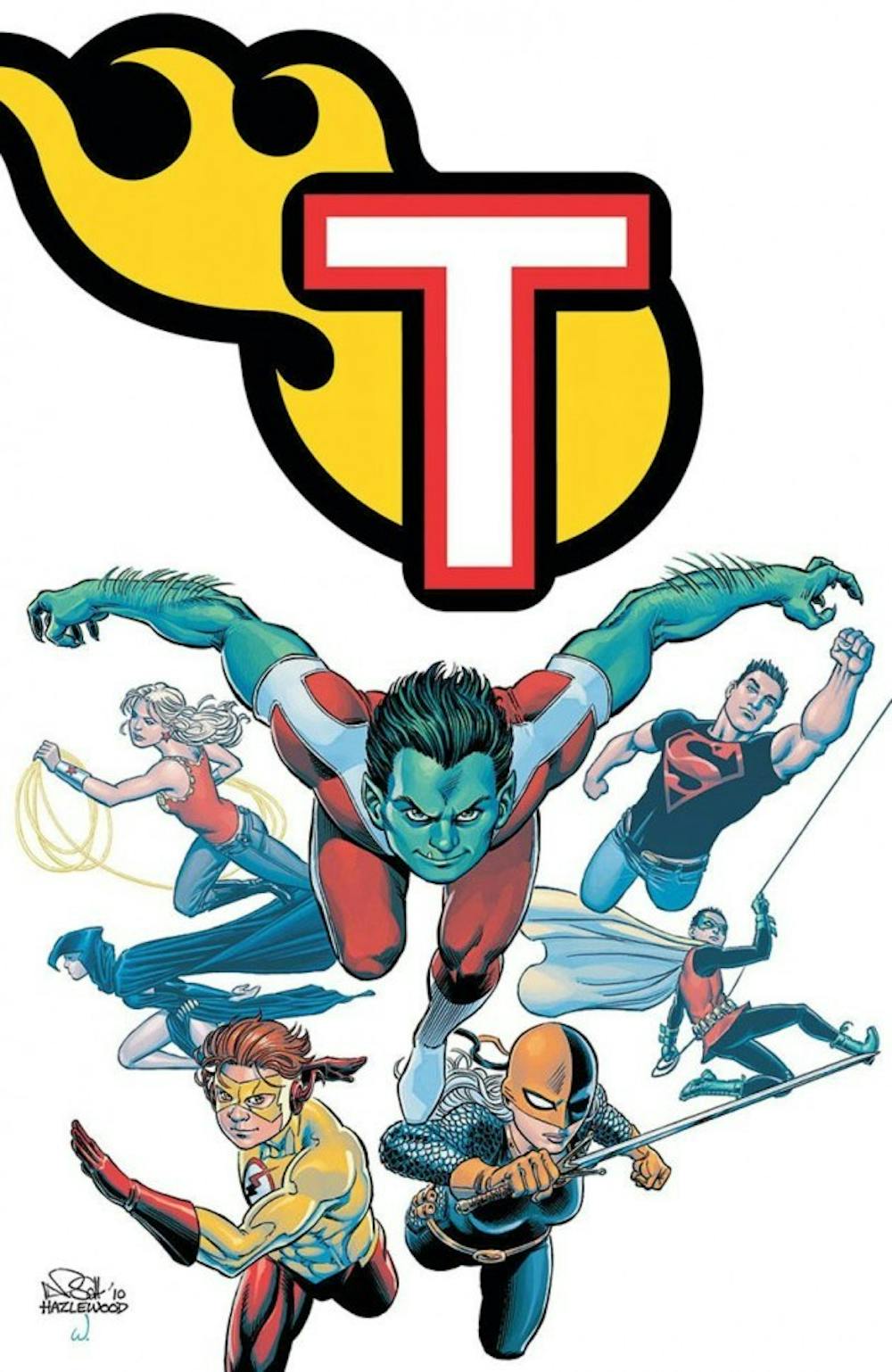Teen Titans No. 91
Puberty is a rough time, especially for those whose weekend chores consist of saving the planet from total destruction. Yet, if there are any adolescent role models to follow, they would be the members of DC's iconic team of young heroes: the Teen Titans. The series has undergone a major facelift in the past year, as Dick Grayson left to become Gotham's new dark knight, and Bruce Wayne's assassin-bred son, Damian, takes up quarters in Titans Tower. Since teamwork was never his best attribute, the new "boy wonder" has a lot to learn. Thankfully, a lesson in butt-kicking isn't needed. Befriending Deathstroke's illegitimate child, Ravager, Damian has at least found some solace in his rather abrupt shift to the team. This issue also heralds the end of a romantic era, as Superboy and his feminine counterpart, Wonder Girl, decide it's best to break it off, as Wonder Girl aims to take the helm of the Titans' flagship.
This issue is full of surprising moments and nostalgic memories, mixed perfectly with the ever-changing landscape of the teenage superhero squad. J. T. Krul's writing has many great panels, but for every panel that has an interesting dialogue, there's another that is relatively shrouded in obscurity. A simple read and a staple franchise of the DC universe, "Teen Titans No. 91" doesn't steal a seat in Homecoming Court, but it definitely wins the award for "most likely to succeed."
Age of X: Alpha
Writer Mike Carey has taken one of Marvel's most beloved franchises and turned it on its head. The mutants don't fight for mankind any more; at this point, they're just fighting for survival.
In a world where the X-Men never existed, and being born a mutant is a crime punishable by death, there are only two options for the sparse population of remaining muties: either kill or be killed.
This antithesis of the X-Men franchise is laying the groundwork for what could be one of the greatest works written about Stan Lee's genetically different heroes. Artist Mirco Pierfederici took the well-recognized faces of Gambit, Cyclops and Magneto and distorted them to fit this twisted alternate reality of Earth.
As these characters' backstories are elegantly brought to light, Pierfederici's work complements the incredibly dark overtone in the most spectacular of ways. There are no smoke and mirrors and no fancy tricks – just gritty, explosive artwork that can make the reader feel the heartache of war. In this strange reality, Magneto is the symbol of hope and unity in the mutant community. He alone is leading the charge to create an equal society. His safe haven for mutants is known worldwide as the only asylum in a country torn asunder by the war on the x-gene.
It's a grim, gritty and utterly war-torn take on a classic franchise, and it's awesome.
Speaker For The Dead No. 1
1985 ushered in a new era for those of the four-eyed variety. It was the year that the Nintendo Entertainment System was introduced, Doc and Marty explored the time-space continuum in Back to the Future, and a relatively unknown Orson Scott Card wrote one of the best science-fiction novels of all time, Ender's Game.
This treasure of the sci-fi genre went on to win two consecutive "best-novel awards" in the category and is still cherished by those who have indulged in Card's masterpiece. In the modern day, graphical representations of precious childhood memories are revered, and a comic book interpretation of Ender's Game's sequel, Speaker For The Dead, was the next logical choice. Logical though it may be, this comic does justice to the work it represents, and with the author of the book on staff, only greatness can be expected to follow. Delivering the series into a new decade with this issue, artist Pop Mhan, scriptwriter Aaron Johnston, and director Orson Scott Card have transitioned the novel almost perfectly to an ink format.
Speaker For The Dead follows the events of the first book, but it does so in a way that any comic fan can pick up instantly. Its rich plot is not fleshed out in the sparse pages in issue no. 1, though Card has laid the groundwork for a spectacular iteration of a timeless piece of science fiction history.
E-mail: arts@ubspectrum.com





